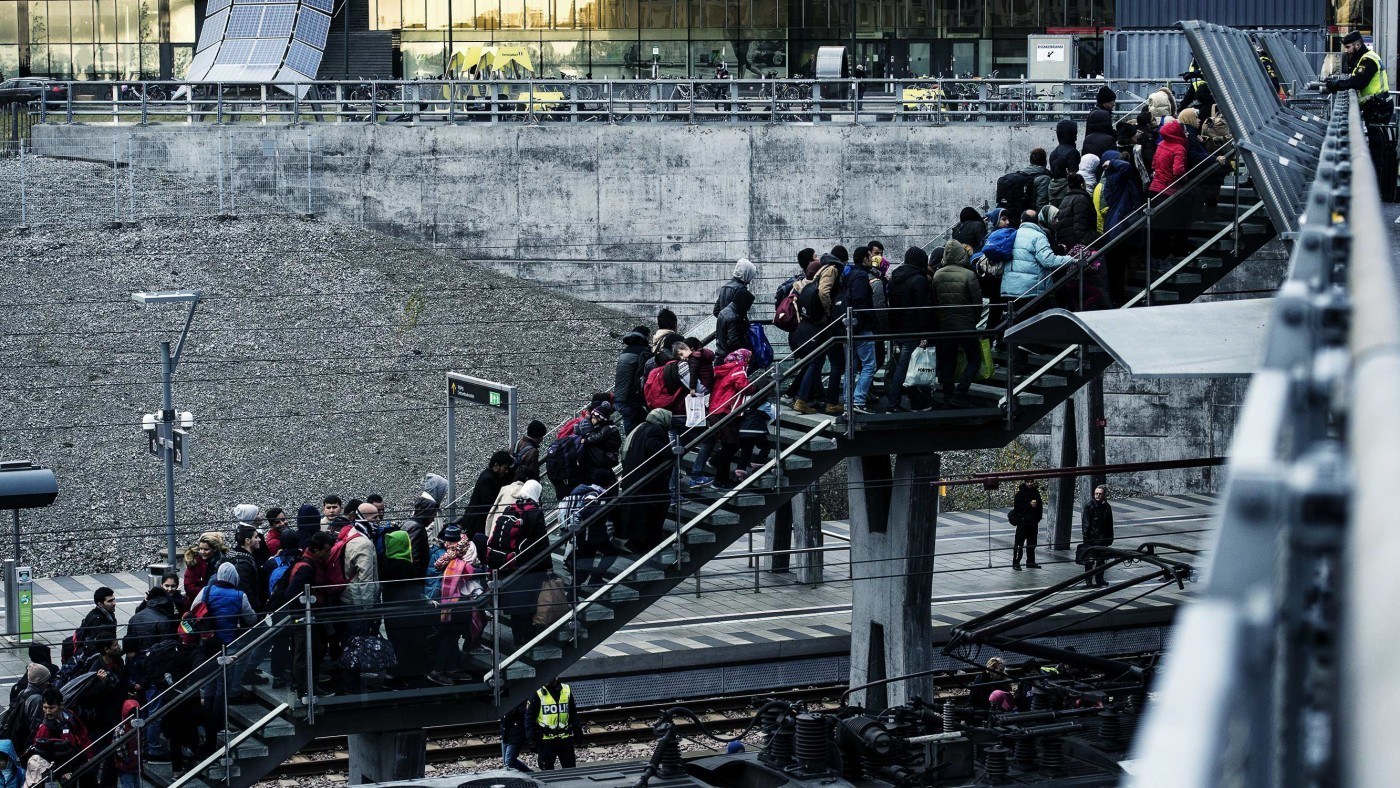The Swedish government is preparing to reject large numbers of immigrants. Upwards of 80,000 immigrants should, according to the interior minister, be forced to leave the country. The news, which is widely reported by international media, is part of a major shift in immigration policy.
In 2010 the anti-immigration Sweden Democrats gained enough votes to enter the parliament. Sweden’s then center-right Prime Minister Fredrik Reinfeldt chose to react with a somewhat unusual strategy: Reinfeldt signed a deal with the opposition Environmental Party, transitioning towards nearly free immigration. He has later explained that the ambition was to isolate the Sweden Democrats from power and influence.
Four years later Reinfeldt’s government was voted out of power. The opposition parties on the left merely increased their voter support by 0.02 per cent. The anti-immigration party however doubled its share of votes, something the party – which historically has neo-Nazi roots – has done in seven consecutive elections. Swedish policies was turned into something of a mess, with the introduction of a third block whom nobody wanted to collaborate with. After some parliamentary turmoil, where a new election was announced but later cancelled, the four center-right parties agreed to not challenge the minority government formed by the Social Democrats and the Environmental Party.
The new government continued it´s pro-immigration policies. Sweden, with its generous welfare systems, proved to be quite a magnet for migrants. At the end of 2015, Sweden was receiving 10,000 immigrants per week. As my brother Tino Sanandaji, an economist critical of the current policies, has pointed out, this can be compared to an annual rate of 25,000 immigrants a year during the period 1990-2010. Reinfeldt’s policy shift, coupled with the breakdown of the European border and the Syrian crises, had moved an already generous immigration policy to almost free immigration.
The cost of receiving new immigrants proved quite high. A significant share are youths without adult companionship who come from Afghanistan. It seems that many are Afghanis who have migrated to Iran and, not satisfied with the life there, turn to Sweden. Under the current policies, the cost of giving support to a single youth who comes without adult companionship, is annually upwards to € 100 000. In the last part of 2014 the system came under considerable stress.
Finally, the Social Democratic prime minister Stefan Löfven reversed policies. Or as The Guardian has phrased it, in the end of November 2015 “Sweden slam[med] shut its open-door policy towards refugees”. When announcing this policy, Åsa Romson – the Environment and ceremonial Deputy Prime Minister of Sweden, who is one of the two leaders of the environmental party – had tears in her eyes.
The Environmentalist Party, which strongly supports the idea of a world without borders, cannot be happy about the recent announcement of mass-deportations. However, it is no surprise that the Social Democrats are pushing for the reform. Firstly, Swedish media is unfortunately flooded on a daily basis with accounts of fighting, crime and sexual assaults related to newly arrived migrants. To give just one example, this week a 22 year old asylum worker, herself of immigrant origin, was stabbed to death in her place of work by a recently arrived migrant.
Also, the Swedish welfare state is far from successful when it comes to integrating immigrants on its labour market. The median refugee granted asylum in Sweden during 2004 merely earned £880 a month ten years later. Amongst family immigrants of refugees the level was as low as £360. This of course points to many living of various forms of public support. This is not a sustainable situation in a generous welfare state, where the public system expends much on various social programs, health care etc. are high for all residents.
Lastly, the support for the Social Democrats has been falling significantly. A leading survey published on the 23rd of January found that the Social Democrats are only supported by 23.2 per cent of the Swedish electorate. This is a record low number, and quite a shock for a party that for long has dominated Swedish policies with support of around 40 to 50 per cent of voters in many elections. A poll-of-polls shows that the Social Democrats on average have 23.9 per cent of the support, closely followed by the conservative Moderates (the party previously lead by Reinfeldt) who have 23.2 per cent and the Sweden Democrats who have 21.0 per cent of the support. Since the latter party systematically has a higher actual share of support in elections than in poles, one can say that the vote is evenly split between the three parties.
The Moderates have already moved from the idea of free-immigration to quite strict policies. Adapting to the challenges ahead, the Social Democrats have followed suit. It remains to be seen how Swedish policies can cope with the situation. The famously egalitarian welfare system in the North is unfortunately singularly unfit for integrating those with foreign origin in its society. Besides the obvious problems with social upheaval and crime, the economic policy must adapt. The high taxes, generous welfare provisions and rigid labour regulation that are trapping many immigrants in welfare dependency simply need changing. The question is if Swedish policies will do a U-turn also in these regards.


